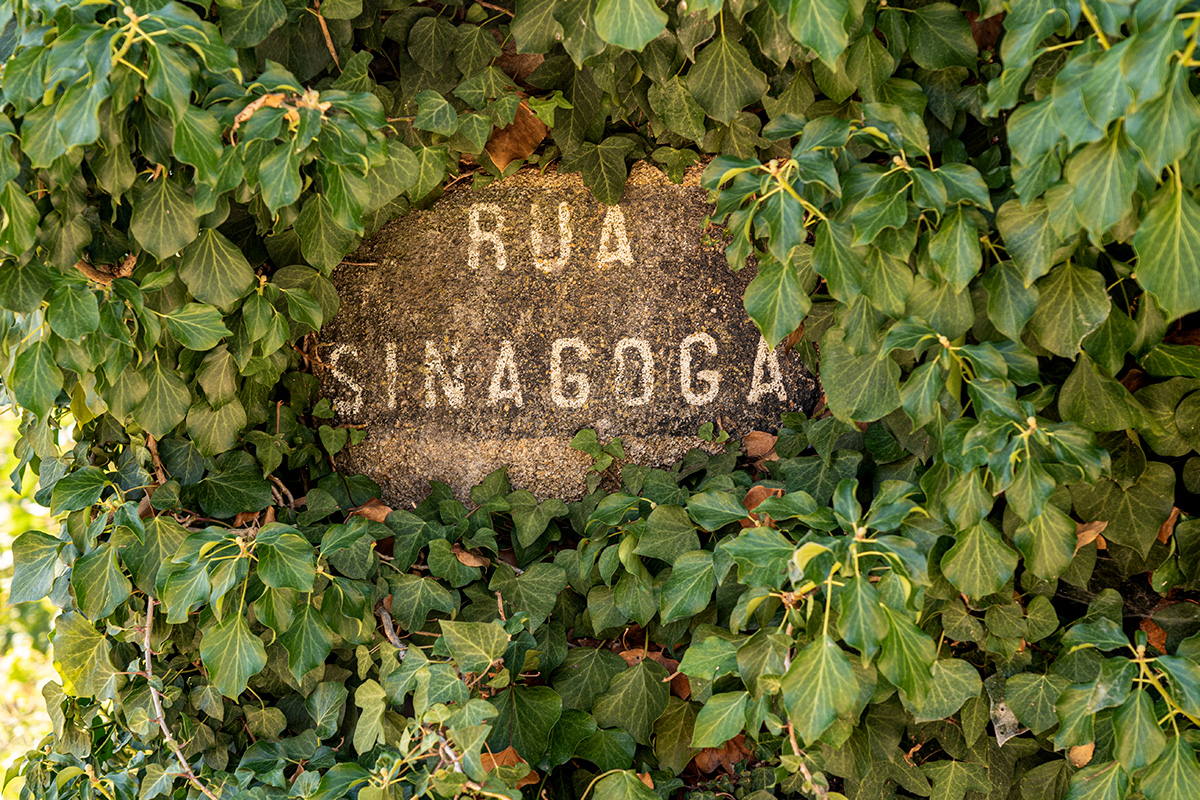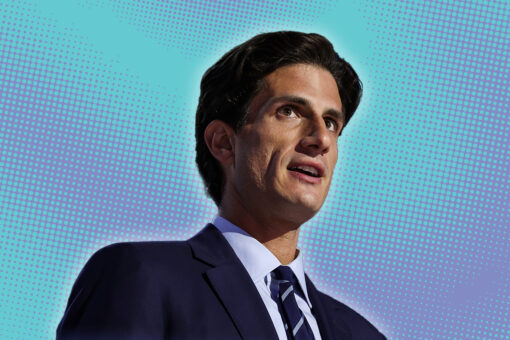There’s the desire to know where we come from, and then there’s the reality of diaspora — namely, that many of us don’t get to know, or can never know. Traditions are lost to assimilation; knowledge of family lines is lost to displacement and genocide; connection to the earth — the rhythms of the seasons, the plants, the trees — is lost to migration.
Searching for my roots has been a hobby of mine since 2015, when I learned that my Grandma Anita, named for her “Spanish” heritage, was not only Ashkenazi, but also a descendent of Sephardic Jews — including famous boxer Daniel Mendoza. But when Portugal announced that the opportunity for Sephardic naturalization would be closing on August 31, 2022, I dropped everything to trace back nine generations of my family. My smattering of census documents and ship records wouldn’t be enough: I needed birth, death and marriage records connecting me to my Sephardic ancestors.
When the Spanish Inquisition began in the 1400s, thousands of Jews were violently forced to convert to Christianity. Many conversos who publicly converted secretly practiced Judaism for hundreds of years and lived under intense scrutiny. One could be suspected of being a Jew if they bought coriander, boiled eggs, swept dust into the center of the floor (as not to sweep past the mezuzah) or ate adafina (stew) on Saturdays. The lives of Sephardic Jews were often shrouded in secrecy — my cousin who applied with me didn’t know we were Sephardic, and countless people who applied for Portuguese citizenship haven’t seen Judaism in their family for five or more generations.
My own family is interfaith. For me, this meant I only got a smattering of each holiday. We had Easter eggs, but I didn’t know who Jesus was until I was at least 12. We symbolically dipped New York apples into honey on Rosh Hashanah and sat with my grandma on Yom Kippur as she — and she alone — broke her fast. When I started immersing myself in a colorful, queer, diasporic Judaism in the Bay Area, thousands of miles from New York, I felt as though everyone knew the words and melodies but me. Yet when Avinu Malkeinu spilled from my lips for the first time on Yom Kippur, I felt connected to every generation of ancestors who might have spoken these words on this day. During visits home as an adult, I recorded my grandma as she told stories, trying to make sense of the family dynamics. Who was the last to make the house kosher for Pesach, and who was the first to buy a Christmas tree as an American symbol, and what happened in those two generations? Whose mother was unkind, and which cousin was unmarried and childless with a “gal pal” who went everywhere with her?
Now, I was trying to trace our lineage even further back. I spent months acquiring countless birth, death and marriage certificates from city and state governments. The U.S. was missing many of the published synagogue records that I needed to prove my connection to Portugal. I left for London on a diasporic pilgrimage to the place where my ancestors lived, married and died for four generations.
I spent time poring through libraries and archives tracing circumcision records, burial records and ketubah abstracts. I had a particularly frantic day in the London Metropolitan Archives when I learned the hard lesson that other people’s trees on Ancestry.com aren’t always accurate. Once I started from what I already knew — which, it turned out, was a lot — a calm focus guided the rest of my search backwards. It turned out that due to many ketubot being lost in a fire in the 1800s, I was better off tracing a different line of my Sephardic heritage from the one I’d been pursuing.
Between library visits, I visited Bevis Marks, the 300-year-old Orthodox Sephardi synagogue of my ancestors. Still early in my Hebrew learning, the new-to-me melodies of the Spanish and Portuguese Sephardi tradition washed over me, ranging from Medieval to Mendelssohn. One congregant shared that it was the anniversary of his father attending services during the German blitz in 1940 that nearly hit the synagogue. I took in the gilded oak Ark cabinet and the chandeliers, and I was welcomed warmly by Rabbi Morris. After services, I spent time with Isaac Montagu — the archivist’s son, a musician and an ethnomusicologist specializing in Sephardic music. We walked along the Thames for hours, the same river in which I did a mikveh days later.
I also visited the historic cemeteries: the Velho, or old cemetery, which dates to the 1500s, and the Novo, or new cemetery, which dates back to the 1730s. Both cemeteries are in the middle of Queen Mary University surrounded by modern buildings; the flat, moss-covered graves with grown-over yarrow and bluebells seemed out of place. The Novo cemetery, which is open to the public, had trash littered about. Nevertheless, I came with offerings of cedar, stones and dried flowers, excited to follow the burial records and visit my ancestors.
Isaac and I spent hours clearing moss and dirt off individual graves, marveling at the fact that I was surrounded by a plot of cousins and community members of my ancestors. But as the hours went by, I had looked at nearly every grave and only managed to find the sister of Aaron Mendoza, one of my ancestors who was the first to come to New York. It was only later that I learned about how many plots had been moved to mass graves in Brentwood, UK to make space to build a university.
I felt angry and heartbroken at how often the graves of the marginalized are displaced. Back in the Bay Area, Jews on Ohlone Land were supporting Save the West Berkley Shellmound, a movement to help the Ohlone people of the Bay Area gain stewardship over their historic burial and village site, one of the oldest places of human habitation in the Bay Area. To this day, this sacred site is surrounded by fences, threatened with development of apartments and retail. For Jews as well as indigenous folks, preservation of tradition, of what is sacred, does not come without struggle.
My weeks of researching, praying and following threads finally led me to finish my family tree with the help of one of the London Spanish and Portuguese archivists, Rachel Montagu: My ninth great-grandparents, Avram and Abigail Gomes da Costa, were the first to arrive in London in 1727. Vindos de Portugal, marked on their ketubah, was the missing piece that proved my Sephardic lineage. 52-year-old Avram and his 16-year-old son, Isaac, were circumcised upon arrival. Avram and his wife Abigail had a proper Jewish marriage less than a year later.
I won’t know whether I’m approved for citizenship for at least a couple of years, and I don’t yet know what it would be like to step foot in Spain and Portugal. I do know that tracing the beginning of my family line in London provided a mirror into my own relationship with Judaism. I thought about how hard my Sephardic ancestors worked to maintain their traditions under the Inquisition, and about what it must have been like to return to their tradition thousands of miles away from the place their family had called home. Connecting with my ancestors’ history of displacement and migration connects me to other groups’ stories of forced migration and displacement. It reminds me of the need for solidarity between us all.
This trip integrated so many parts of my life: I went to cemeteries and synagogues, a philosophy conference and queer bars, forests and rivers. When I feel the challenges I face in my own life with uprooting, moving, changing and starting anew, I think about the ancestral pain that so many Jews — and my own family — carry in their bodies. At the same time, I think about the resilience of my ancestors: their commitment to Judaism, to their families and to the hope for a better life for the next generation: l’dor v’dor.



